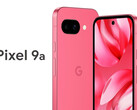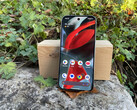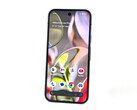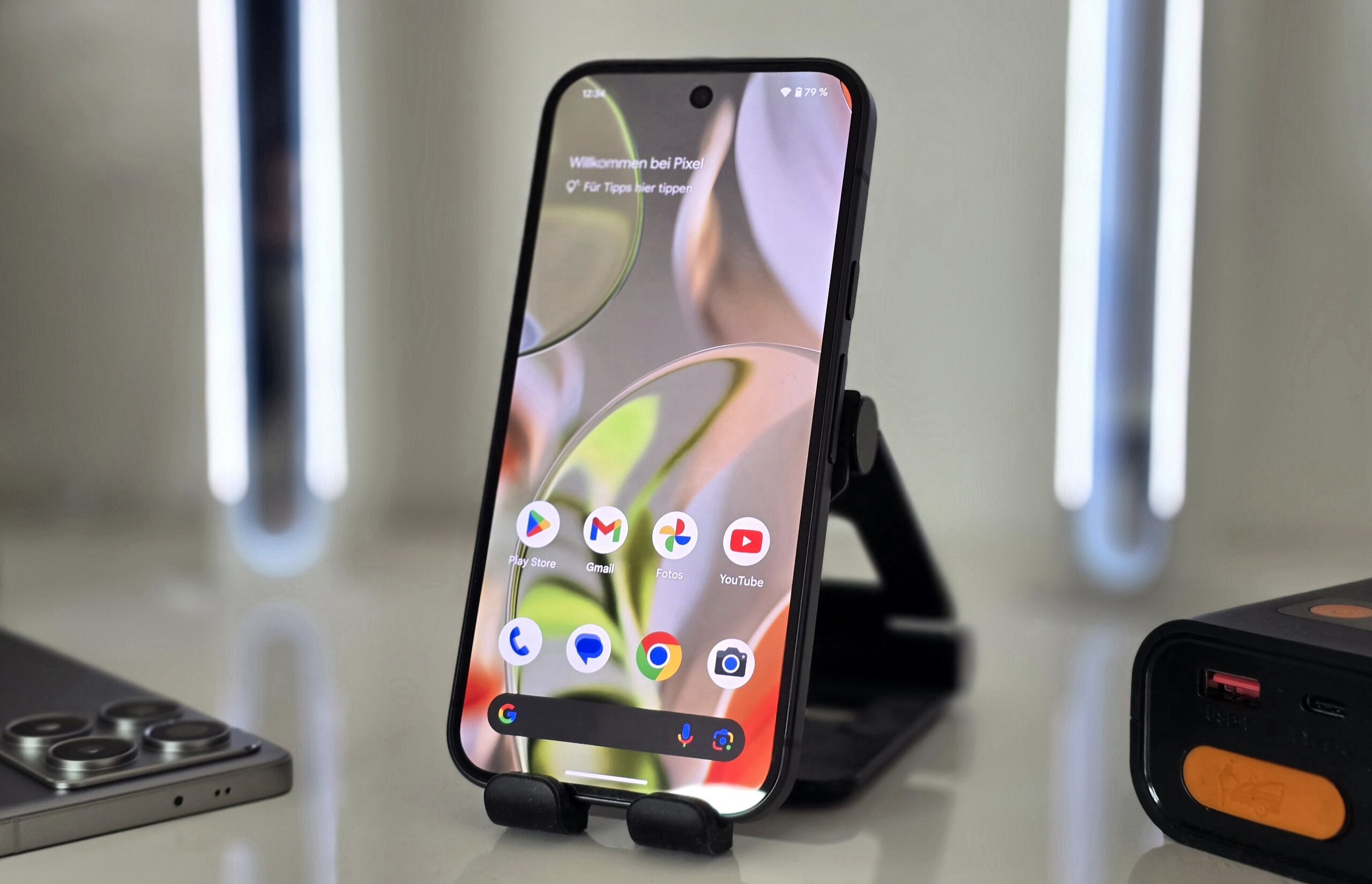
Google Pixel 9 review - The small Google smartphone has taken the wrong path
Farewell greatest camera package.
Aside from a flagship SoC, the compact Pixel 9 boasts an impressive update delivery timeframe as well as a super bright OLED panel. In this Notebookcheck review of the Pixel phone, you can find out whether it remains the camera benchmark for a smartphone below the 1000-dollar mark. Update: A closer look at the gaming performance of the G4 chip.Marcus Herbrich, 👁 Daniel Schmidt (translated by Daisy Dickson) Published 🇩🇪 🇫🇷 ...
Verdict on the Google Pixel 9
Over the course of the last few years, the normal Pixel series from Google acted as a sort of reference among the "affordable" Android smartphones in all things photo quality. It isn't without reason that the manufacturer has once more set its focus on the Pixel 9's cameras. However, since the Pixel 7, its leap from the upper mid-range to the upper class has been pushed in just two generations. Although the Pixel 9 still boasts good photography performance, the competition is quickly catching up at a price of just under $1000. Especially when it comes to zoom photography, the latest Pixel generation disappoints and its main camera also isn't better than those of the competition—if anything, it's the complete opposite.
The Pixel 9's strengths include good photo quality, long runtimes, a super bright OLED display and extensive software support. We also really like its new ultrasound fingerprint sensor. These are all virtues that a Galaxy S24 also has, but the Samsung phone offers the better total package and additionally features a high-end SoC. Especially the Tensor G4 inside the Pixel 9 is in no way superior to its Qualcomm and MediaTek rivals. In addition, the Pixel 9's slow charging speeds are anything but a reason to purchase the phone. We would have wished for much clearer progress in this respect compared to its predecessor—not to mention that this model doesn't even come with a power supply.
Those interested in a top-of-the-range phone can get more performance combined with really fast charging times in the shape of the Xiaomi 14 or the 14T Pro, for example. A Oneplus 12 would also be a good alternative to the Pixel 9.
Pros
Cons
Price and availability
The base version of the Google Pixel 9 has an MRSP of $799 and can be purchased via online retailers such as Amazon.
Price comparison
Possible alternatives compared
Image | Model / Review | Geizhals | Weight | Drive | Display |
|---|---|---|---|---|---|
| Google Pixel 9 Google Tensor G4 ⎘ ARM Mali-G715 MP7 ⎘ 12 GB Memory, 128 GB | 198 g | 128 GB UFS 3.1 Flash | 6.30" 2424x1080 421 PPI OLED | ||
| Xiaomi 14 Qualcomm Snapdragon 8 Gen 3 ⎘ Qualcomm Adreno 750 ⎘ 12 GB Memory, 256 GB | 193 g | 256 GB UFS 4.0 Flash | 6.36" 2670x1200 460 PPI OLED | ||
| Samsung Galaxy S24 Samsung Exynos 2400 ⎘ Samsung Xclipse 940 ⎘ 8 GB Memory, 256 GB | 167 g | 256 GB UFS 4.0 Flash | 6.20" 2340x1080 416 PPI Dynamic AMOLED 2X | ||
| OnePlus 12 Qualcomm Snapdragon 8 Gen 3 ⎘ Qualcomm Adreno 750 ⎘ 16 GB Memory, 512 GB | 220 g | 512 GB UFS 4.0 Flash | 6.82" 3168x1440 510 PPI AMOLED | ||
| Google Pixel 8 Google Tensor G3 ⎘ ARM Mali-G715 MP7 ⎘ 8 GB Memory, 128 GB | 187 g | 128 GB UFS 3.1 Flash | 6.20" 2400x1080 424 PPI OLED |
Table of Contents
- Verdict on the Google Pixel 9
- Case - The Pixel 9 with an IP68 certification
- Connectivity - The Google smartphone with USB 3.2
- Software - 7 years of updates for the Pixel 9
- Communication and GNSS - The Google phone with 5G
- Telephone functions and call quality - The Pixel 9 supports eSIMs
- Cameras - The Google smartphone with optical image stabilization
- Accessories and warranty - The Pixel 9 is missing a power supply
- Input devices & operation - The Google phone with Face Unlock
- Display - The Google Pixel 9 uses OLED
- Performance - A Tensor SoC inside the Pixel 9 with deficits
- Games - Gaming is possible on the Pixel 9
- Emissions - Low temperatures on the Google phone
- Battery life - The Pixel 9 still charges slowly
- Notebookcheck overall rating
The ninth generation of the small Pixel phone from Google once again unites compact measurements with a selection of features that require no compromises to be made. This year, the Pixel 9 again gets to make use of many components known from the Pro models. At the heart of the Google Pixel 9 is the new Tensor G4, which is theoretically only a minor upgrade compared to last year's SoC. Otherwise, much remains the same and the improvements seem to be limited. However, the successor to the Pixel 8 has more RAM—namely 12 GB—and its battery is also slightly larger at 4,700 mAh.
Although the upgrades within the Pixel 9 generation have proven to be somewhat limited and Google increased its prices dramatically last year already, the entry into the Pixel world has been adjusted significantly upwards once more. The base version of the Pixel phone is still 128 GB, but now for an MRSP of $799. The version of the Pixel 9 with 256 GB of storage now comes nearer to the 1000-dollar mark (MRSP: $899).
Case - The Pixel 9 with an IP68 certification
The Pixel 9 series features a different, slightly more rounded look than the 2023 models. In addition, the now iconic camera bar has been further developed by the manufacturer from Mountain View. Even so, the Pixel 9 still oozes Pixel DNA. Its good build quality known from high-end Google phones, along with its IP68 certification, has remained unchanged. This means its case is completely dust and waterproof.
The Pixel 9 comes in four different colors and in comparison to the Pixel 8, its slightly larger 6.3-inch display has gotten a bit wider and taller. The bezels surrounding the OLED panel, on the other hand, are slimmer, resulting in the latest Pixel generation featuring an improved ratio between its screen and case size, namely 86.1 percent. Even so, the Pixel 9 doesn't look the most modern compared to other manufacturers' compact phone ranges—a Galaxy S24, for example, boasts a much better value (90.9 percent).
Gorilla Glass Victus 2 is used on the front and back of the device which, in combination with the satin metal frames, feels nice to touch and gives the phone a really high-quality appearance. This is only the case when you admire the Pixel 9 from afar, however, as its glossy back becomes quite the fingerprint magnet in the hands of its user. We would have preferred the use of the Pro models' matte glass. Although the colorful versions of the Pixel 9 seem less susceptible to this problem than our black test sample is.
Connectivity - The Google smartphone with USB 3.2
The Pixel 9 is equipped with an NFC chip and supports Miracast as well as Google Cast. The top-of-the-range Pixel phone's Bluetooth standard is still version 5.3, as the Tensor G4 doesn't seem to differ from the predecessor's SoC in this respect. For securely storing user data and passwords, the Pixel 9 relies on the in-house Titan M2 chip, which is based on the free CPU instruction set RISC-V and serves as a hardware security module (HSM). The Pixel 9 doesn't have an IR blaster or a UWB chip. The IR thermometer is also exclusive to the Pro model.
Our test sample's UFS 3.1 storage has a capacity of 128 GB, whereby users have 109.5 GB free to use in the phone's delivered state. The internal storage can't be expanded but thanks to USB OTG, you can connect storage media. Using a Samsung Portable SSD T7, we were only able to elicit 184 Mbit/s from the technically fast USB standard (3.2 Gen 1), which supports wired image output to HDMI or DisplayPort interfaces. Our Samsung 980 Pro wasn't recognized, which was probably due to the connection having an insufficiently high output power. The connected storage media may be formatted using FAT, FAT32 or exFAT. However, the Google phone doesn't support NTFS.
Software - 7 years of updates for the Pixel 9
According to the manufacturer, the Pixel 9 will receive operating system and security updates for seven years, which is really impressive. However, the current Pixel generation is still being delivered with Android 14 installed—which was introduced last year—and not with the upcoming successor version. At the time of testing, its security patches were from September 2024, and they are rolled out monthly.
As with other manufacturers, AI has certainly not been neglected on the Pixel 9. In addition to AI features such as Circle to Search, the in-house assistant Gemini is also designed to make the Google phone smarter. If you want, you can also take out a paid subscription package with Gemini Advanced (MRSP: $25) to benefit from more powerful AI models for complex tasks such as coding.
Sustainability
Google is not only showing its awareness of sustainable thinking when it comes to the phone's long update period, but also with the materials used during production. The manufacturer hasn't provided exact CO2 emission values, but does state that at least 20 percent of the product weight is made from recycled materials. Recycled aluminum (12 percent) makes up the largest proportion of this. The material used in its case consists of 100% recycled materials. The packaging in which the Pixel 9 is delivered to the customer is also plastic-free.
Communication and GNSS - The Google phone with 5G
The Pixel 9 proves to be futureproof when it comes to its wireless standards—for at-home use as well as on the go. It masters Wi-Fi 7 including 6 GHz WLAN which, in combination with our Asus ROG Rapture GT-AXE11000 reference router, resulted in very high and stable transfer rates.
For mobile internet access, the Google phone supports the 5G and 4G networks and boasts a wide frequency cover. The Pixel 9 is set up very well for use in Germany, where this test was carried out, but users should also face no connectivity issues further afield. Support for 30 LTE bands is almost equivalent to a global phone.
| Networking | |
| Google Pixel 9 | |
| iperf3 receive AXE11000 | |
| iperf3 transmit AXE11000 | |
| iperf3 transmit AXE11000 6GHz | |
| iperf3 receive AXE11000 6GHz | |
| Xiaomi 14 | |
| iperf3 receive AXE11000 | |
| iperf3 transmit AXE11000 | |
| iperf3 transmit AXE11000 6GHz | |
| iperf3 receive AXE11000 6GHz | |
| Samsung Galaxy S24 | |
| iperf3 receive AXE11000 | |
| iperf3 transmit AXE11000 | |
| OnePlus 12 | |
| iperf3 receive AXE11000 | |
| iperf3 transmit AXE11000 | |
| Google Pixel 8 | |
| iperf3 receive AXE11000 | |
| iperf3 transmit AXE11000 | |
| iperf3 transmit AXE11000 6GHz | |
| iperf3 receive AXE11000 6GHz | |
| Average of class Smartphone | |
| iperf3 receive AXE11000 | |
| iperf3 transmit AXE11000 | |
| iperf3 transmit AXE11000 6GHz | |
| iperf3 receive AXE11000 6GHz | |
The Pixel 9's locating capabilities are very fast and accurate outside. Inside buildings, its accuracy isn't quite as good, but its precision can still be classed as good. It supports dual-band GNSS including all global satellite navigation systems as well as NavIC.
In order to test the accuracy of its location services in practice, we took our test sample with us on a short bike trip and additionally recorded our route with a Garmin Venu 2 to compare. We generally liked the Pixel 9's locating abilities, but several deviations crept in during our test route. The route we chose was often left behind when the Google phone was routed. Nevertheless, the Pixel 9 can still be used for car navigation tasks without hesitation.
Telephone functions and call quality - The Pixel 9 supports eSIMs
The Pixel 9 has dual-SIM support, but only if users integrate one eSIM into the system, as the SIM slot only has space for one card. Alternatively, you can connect two eSIMs via the phone's settings.
With the phone held up to your ear, the call quality feels natural and most background noise is reliably filtered out. Calls can be made using Wi-Fi as well as via the LTE network. Google also offers the so-called "Crystal clear calls" function for VoWiFi and VoLTE, which enables increased noise filtering. According to Google, the sound data is processed on the Pixel 9 itself.
Cameras - The Google smartphone with optical image stabilization
As could already be seen on the Pixel 8, the Pixel 9 features an f/2.2 selfie camera with a resolution of 10.5 megapixels. The lens on the front now has access to an autofocus, which was previously reserved for the Pro models. The results are nice and sharp with lots of details but for our taste, Google has overdone it a little with the sharpening and saturation. Videos can be recorded at best in Ultra HD and at 60fps, while HDR recordings are limited to 30fps.
Regarding the cameras on the back, the Pixel 9 now uses the same main and ultra-wide-angle lenses as the Pro model—it is only missing a telephoto lens. The latter results in zoom shots on the Pixel 9 only being usable if they are within the sensor cropping range (2x). In addition, the Google phone already hits its limit at an eightfold magnification.
The 50-megapixel main camera with an aperture of f/1.7, on the other hand, delivers really good photos with a natural color depiction. Do we see the 1/1.31-inch sensor in combination with Google's post-processing as the best in the class in terms of photo quality? The Pixel 9 simply reveals too many shortcomings for that to be the case. The pronounced blurring around the edges is particularly noticeable. Although the exposure is good and photos aren't artificially brightened, the Google phone also tends to "swallow" some details, such as the roof tiles of some houses in the lake photo (test photo no. 2).
The low-light photos score points with their good illumination, and their sharpness level isn't bad either. If the Pixel 9 were still in the price range of a Pixel 7 (MRSP: $665), we would have nothing to criticize, but for an 800-dollar phone, its soft focus in low light is quite pronounced. A Galaxy S24 does this visibly better, even if the differences are not that significant.
Videos can be recorded in Ultra HD at up to 60fps, but the Pixel lacks an 8K option. On the other hand, its stabilization and autofocus are very good.
For the ultra-wide-angle camera, Google has swapped out the 12-megapixel lens of its predecessor for a 48-MPix lens with a larger 1/2.55-inch sensor and a much brighter f/1.7 aperture. This puts the Pixel 9 right at the top in terms of quality. The Google phone shows few image errors and a good dynamic range. However, we are not entirely enamored by its sharpness along the image edges and details are sometimes captured better by the competition.
If you want, you can use numerous AI functions for post-processing. An intelligent image and video editing function called Magic Editor is available to do so. Among other things, this allows you to change the background of photos or remove elements. The "Add Me" function ensures that a group photo is recorded multiple times using augmented reality so that all people appear in one shot. Another new feature is "Best Image Section", an option for photos that have already been taken and for which a new image section is generated. You can also extend the photo using Generative AI.
Image comparison
Choose a scene and navigate within the first image. One click changes the position on touchscreens. One click on the zoomed-in image opens the original in a new window. The first image shows the scaled photograph of the test device.
Wide-angleWide-angleLow lightUltra-wide angle5x ZoomIn controlled lighting conditions, we analyzed the main camera's color representation in comparison to the actual reference colors. In addition to the brightening that often occurs with smartphones, the Pixel 9 didn't reveal any major deviations when depicting the ColorChecker passport and delivered a solid white balance. The upper-class phone only showed color outliers (>10) when depicting cyan.


Accessories and warranty - The Pixel 9 is missing a power supply
Straight out of the box, the Pixel 9 comes without a screen protector installed and its scope of delivery is very limited. The Google phone comes with a USB-C to USB-C cable (USB 2.0) but apart from this, only the obligatory leaflets and a SIM tool are included. You can optically purchase further accessories, such as a 45-watt power supply (MRSP: $29.99) and a variety of cases.
In the United States, the Pixel 9 is covered by a standard 12-month warranty. Additional cover can be purchased through the official Google store, whereby a 2-year cover costs $159 or you can sign up for a monthly plan costing $8. You should also be able to get your hands on replacement parts for seven years. Google has had a partnership with iFixit for several years now. At the time of testing, a replacement battery with a tool could be purchased for around $45.
Input devices & operation - The Google phone with Face Unlock
The installed 160-millimeter Actua full-screen display with a refresh rate of 120 Hz makes animations and scrolling on websites appear beautifully smooth. Inputs on the OLED panel are implemented quickly and accurately right into the corners of the touchscreen. The linear vibration motor (z-axis) inside the Pixel phone also ensures a pleasant typing experience.
The positioning of the buttons, on the other hand, takes some getting used to—at least if users are switching from another manufacturer to a Pixel phone. The buttons have the typical Google arrangement, with the on/off button being located above the volume rocker. In contrast, the Pixel 9's fingerprint sensor hardly takes any getting used to. This now uses ultrasound technology for the first time and delivers very fast response times. The sensor's recognition rates are just as good and it is nice and high up.
The front camera provides biometric security using facial data. It is also quick to unlock in good lighting conditions, but this facial recognition relies on a 2D process that is less secure.
Display - The Google Pixel 9 uses OLED

The Pixel 9's 6.3-inch OLED panel has a 1080p resolution at a good 422 ppi and an aspect ratio of 20:9. The Google phone does not support dynamic refresh rate adjustment depending on the content displayed; only the Pro models currently benefit from LTPO technology. The panel runs at a frequency of only 60 Hz ex works. Alternatively, the refresh rate can be adjusted to 120 Hz by selecting "Smooth Mode".
The Pixel 9 does well in terms of brightness. In our measurements, the Google phone was almost record-breakingly bright at up to 2,063 cd/m² with the ambient light sensor activated and displaying a pure white display. In contrast, its illumination is heterogeneous, which is rather untypical for an OLED panel. We measured up to 2,844 cd/m² when displaying bright and dark areas (APL18 pattern) and 2,793 cd/m² during HDR playback. As a result, our results were fully in line with the manufacturer's specifications (max. 2,700 cd/m²).
| |||||||||||||||||||||||||
Brightness Distribution: 84 %
Center on Battery: 2063 cd/m²
Contrast: ∞:1 (Black: 0 cd/m²)
ΔE ColorChecker Calman: 0.7 | ∀{0.5-29.43 Ø4.81}
ΔE Greyscale Calman: 1.2 | ∀{0.09-98 Ø5.1}
99% sRGB (Calman 2D)
Gamma: 2.23
CCT: 6524 K
| Google Pixel 9 OLED, 2424x1080, 6.3" | Xiaomi 14 OLED, 2670x1200, 6.4" | Samsung Galaxy S24 Dynamic AMOLED 2X, 2340x1080, 6.2" | OnePlus 12 AMOLED, 3168x1440, 6.8" | Google Pixel 8 OLED, 2400x1080, 6.2" | |
|---|---|---|---|---|---|
| Screen | -37% | -108% | -52% | -45% | |
| Brightness middle (cd/m²) | 2063 | 1043 -49% | 1349 -35% | 1026 -50% | 1450 -30% |
| Brightness (cd/m²) | 1914 | 1052 -45% | 1369 -28% | 991 -48% | 1410 -26% |
| Brightness Distribution (%) | 84 | 96 14% | 97 15% | 91 8% | 92 10% |
| Black Level * (cd/m²) | |||||
| Colorchecker dE 2000 * | 0.7 | 1.1 -57% | 3.3 -371% | 1.19 -70% | 1.1 -57% |
| Colorchecker dE 2000 max. * | 2.2 | 2.8 -27% | 5 -127% | 3.3 -50% | 4.2 -91% |
| Greyscale dE 2000 * | 1.2 | 1.9 -58% | 2.4 -100% | 2.4 -100% | 2.1 -75% |
| Gamma | 2.23 99% | 2.23 99% | 1.97 112% | 2.24 98% | 2.24 98% |
| CCT | 6524 100% | 6740 96% | 6635 98% | 6920 94% | 6584 99% |
| Color Space (Percent of sRGB) (%) | 99.5 |
* ... smaller is better
Due to the installed OLED technology, Google relies on pulse-width modulation to control the screen's brightness. However, the manufacturer doesn't use a type of PWM dimming that is easy on the eyes, such as Xiaomi does in its smartphones featuring OLED displays which use high-frequency flickering (3,845 Hz). On the Pixel 9, we measured a constant but very low 120 Hz using an oscilloscope. Anyone who is sensitive to flickering displays should therefore expect complaints. The amplitude deflection of over 22 percent doesn't change this—a value well below 20 percent would be desirable for 120 Hz panels. The greater this value deviates from 0 percent, the higher the probability that changes in the brightness control will be noticed negatively.
Screen Flickering / PWM (Pulse-Width Modulation)
| Screen flickering / PWM detected | 120 Hz Amplitude: 22.22 % | ||
The display backlight flickers at 120 Hz (worst case, e.g., utilizing PWM) . The frequency of 120 Hz is very low, so the flickering may cause eyestrain and headaches after extended use. In comparison: 53 % of all tested devices do not use PWM to dim the display. If PWM was detected, an average of 8224 (minimum: 5 - maximum: 343500) Hz was measured. | |||
Measurement series with fixed zoom level and different brightness settings (The amplitude curve at minimum brightness looks flat, but this is due to the scaling. The info box shows the enlarged version of the amplitude at minimum brightness).
The Google phone also doesn't show its best side when it comes to its options for adjusting the display calibration. Two preset profiles are not exactly plentiful, but this will probably be sufficient for most people. However, it is a shame that the white balance can't be adjusted in either of the two modes. The UI should offer this option in 2024.
Using the "Natural" profile, the colors are displayed very accurately and the grayscale deviations are also impressive. We measured no noticeable color cast.
Display Response Times
| ↔ Response Time Black to White | ||
|---|---|---|
| 1.04 ms ... rise ↗ and fall ↘ combined | ↗ 0.5335 ms rise | |
| ↘ 0.502 ms fall | ||
| The screen shows very fast response rates in our tests and should be very well suited for fast-paced gaming. In comparison, all tested devices range from 0.1 (minimum) to 240 (maximum) ms. » 3 % of all devices are better. This means that the measured response time is better than the average of all tested devices (20.4 ms). | ||
| ↔ Response Time 50% Grey to 80% Grey | ||
| 1.55 ms ... rise ↗ and fall ↘ combined | ↗ 0.9135 ms rise | |
| ↘ 0.6375 ms fall | ||
| The screen shows very fast response rates in our tests and should be very well suited for fast-paced gaming. In comparison, all tested devices range from 0.165 (minimum) to 636 (maximum) ms. » 6 % of all devices are better. This means that the measured response time is better than the average of all tested devices (31.8 ms). | ||
Outside, the Pixel 9 benefits from its OLED panel's high brightness and left a first-class impression. The Google phone has enough brightness in reserve to be able to deal with any lighting situation. Reflections barely impact its readability. It should just be noted that its maximum brightness without the ambient light sensor activated is "only" 1,017 cd/m².
The colors remain stable and vivid even when viewed flat and the loss of brightness is also kept within limits.
Performance - A Tensor SoC inside the Pixel 9 with deficits
As you would expect from a Pixel phone, it comes equipped with an in-house SoC. According to the manufacturer, the Tensor chipset was developed especially for optimized AI performance. Our AI benchmarks confirmed this, with the phone achieving strong values. In terms of pure CPU power, however, the Pixel 9 looks rather modest in this price range. The Tensor G4 couldn't even begin to keep up with a current high-end SoC, especially during the Geekbench multi-core test. A Snapdragon 8 Gen 3 and MediaTek Dimensity 9300+ are significantly more powerful.
According to Google, its own chipset should not dominate benchmarks, but rather excel in everyday usability and user experience. However, we also noted some slight deficits in the Pixel 9 in this area. Occasionally, (non-reproducible) graphical errors occurred during our test, such as when opening the settings menu, where only a white background without content appeared. The Google phone also took a second longer to load complex apps—such as games—in direct comparison with a Xiaomi 14T Pro.
| CrossMark - Overall | |
| OnePlus 12 | |
| Samsung Galaxy S24 | |
| Xiaomi 14 | |
| Average of class Smartphone (187 - 2674, n=131, last 2 years) | |
| Average Google Tensor G4 (951 - 1102, n=4) | |
| Google Pixel 8 | |
| Google Pixel 9 | |
| UL Procyon AI Inference for Android - Overall Score NNAPI | |
| Average Google Tensor G4 (35227 - 42062, n=5) | |
| Google Pixel 9 | |
| Google Pixel 8 | |
| Average of class Smartphone (3769 - 81594, n=135, last 2 years) | |
| Xiaomi 14 | |
| OnePlus 12 | |
| Samsung Galaxy S24 | |
| AImark - Score v3.x | |
| Average of class Smartphone (82 - 307528, n=124, last 2 years) | |
| OnePlus 12 | |
| Xiaomi 14 | |
| Google Pixel 8 | |
| Samsung Galaxy S24 | |
| Average Google Tensor G4 (690 - 1434, n=5) | |
| Google Pixel 9 | |
| Geekbench AI | |
| Single Precision TensorFlow NNAPI 1.1 | |
| Google Pixel 9 | |
| Average of class Smartphone (122 - 4122, n=41, last 2 years) | |
| Average Google Tensor G4 (376 - 771, n=4) | |
| OnePlus 12 | |
| Xiaomi 14 | |
| Samsung Galaxy S24 | |
| Half Precision TensorFlow NNAPI 1.1 | |
| Google Pixel 9 | |
| Average Google Tensor G4 (4176 - 4754, n=4) | |
| Average of class Smartphone (122 - 32120, n=41, last 2 years) | |
| OnePlus 12 | |
| Samsung Galaxy S24 | |
| Xiaomi 14 | |
| Quantized TensorFlow NNAPI 1.1 | |
| Google Pixel 9 | |
| Average Google Tensor G4 (6269 - 6451, n=4) | |
| Average of class Smartphone (118 - 44381, n=41, last 2 years) | |
| OnePlus 12 | |
| Samsung Galaxy S24 | |
| Xiaomi 14 | |
When it comes to GPU performance, the gap between the ARM Mali-G715 MP7 installed in the Pixel 9 and the upper-class competition becomes even wider—even more noticeable than in the CPU tests. At times, a Xiaomi 14 performed over 50 percent better in the GFXBench results than the Google phone.
GFXBench (DX / GLBenchmark) 2.7: T-Rex Onscreen | 1920x1080 T-Rex Offscreen
GFXBench 3.0: on screen Manhattan Onscreen OGL | 1920x1080 1080p Manhattan Offscreen
GFXBench 3.1: on screen Manhattan ES 3.1 Onscreen | 1920x1080 Manhattan ES 3.1 Offscreen
GFXBench: on screen Car Chase Onscreen | 1920x1080 Car Chase Offscreen | on screen Aztec Ruins High Tier Onscreen | 2560x1440 Aztec Ruins High Tier Offscreen | on screen Aztec Ruins Normal Tier Onscreen | 1920x1080 Aztec Ruins Normal Tier Offscreen | 3840x2160 4K Aztec Ruins High Tier Offscreen
| 3DMark / Wild Life Extreme Unlimited | |
| Xiaomi 14 | |
| OnePlus 12 | |
| Samsung Galaxy S24 | |
| Google Pixel 9 | |
| Google Pixel 8 | |
| 3DMark / Wild Life Extreme | |
| Xiaomi 14 | |
| OnePlus 12 | |
| Samsung Galaxy S24 | |
| Google Pixel 9 | |
| Google Pixel 8 | |
| 3DMark / Wild Life Unlimited Score | |
| Xiaomi 14 | |
| OnePlus 12 | |
| Samsung Galaxy S24 | |
| Google Pixel 9 | |
| Google Pixel 8 | |
| 3DMark / Wild Life Score | |
| Google Pixel 9 | |
| Google Pixel 8 | |
| Xiaomi 14 | |
| 3DMark / Solar Bay Score | |
| Xiaomi 14 | |
| OnePlus 12 | |
| Samsung Galaxy S24 | |
| Google Pixel 9 | |
| 3DMark / Solar Bay Unlimited Score | |
| Xiaomi 14 | |
| OnePlus 12 | |
| Samsung Galaxy S24 | |
| 3DMark / Steel Nomad Light Unlimited Score | |
| OnePlus 12 | |
| Google Pixel 9 | |
| 3DMark / Steel Nomad Light Score | |
| OnePlus 12 | |
| Google Pixel 9 | |
| GFXBench (DX / GLBenchmark) 2.7 / T-Rex Onscreen | |
| Xiaomi 14 | |
| Google Pixel 8 | |
| Google Pixel 9 | |
| Samsung Galaxy S24 | |
| OnePlus 12 | |
| GFXBench (DX / GLBenchmark) 2.7 / T-Rex Offscreen | |
| OnePlus 12 | |
| Xiaomi 14 | |
| Google Pixel 9 | |
| Samsung Galaxy S24 | |
| Google Pixel 8 | |
| GFXBench 3.0 / Manhattan Onscreen OGL | |
| Xiaomi 14 | |
| Google Pixel 9 | |
| Samsung Galaxy S24 | |
| Google Pixel 8 | |
| OnePlus 12 | |
| GFXBench 3.0 / 1080p Manhattan Offscreen | |
| Xiaomi 14 | |
| OnePlus 12 | |
| Samsung Galaxy S24 | |
| Google Pixel 9 | |
| Google Pixel 8 | |
| GFXBench 3.1 / Manhattan ES 3.1 Onscreen | |
| Xiaomi 14 | |
| Samsung Galaxy S24 | |
| Google Pixel 9 | |
| Google Pixel 8 | |
| OnePlus 12 | |
| GFXBench 3.1 / Manhattan ES 3.1 Offscreen | |
| Xiaomi 14 | |
| OnePlus 12 | |
| Samsung Galaxy S24 | |
| Google Pixel 9 | |
| Google Pixel 8 | |
| GFXBench / Car Chase Onscreen | |
| Xiaomi 14 | |
| Samsung Galaxy S24 | |
| Google Pixel 9 | |
| OnePlus 12 | |
| Google Pixel 8 | |
| GFXBench / Car Chase Offscreen | |
| Xiaomi 14 | |
| OnePlus 12 | |
| Samsung Galaxy S24 | |
| Google Pixel 9 | |
| Google Pixel 8 | |
| GFXBench / Aztec Ruins High Tier Onscreen | |
| Samsung Galaxy S24 | |
| Xiaomi 14 | |
| Google Pixel 9 | |
| OnePlus 12 | |
| Google Pixel 8 | |
| GFXBench / Aztec Ruins High Tier Offscreen | |
| Xiaomi 14 | |
| OnePlus 12 | |
| Samsung Galaxy S24 | |
| Google Pixel 9 | |
| Google Pixel 8 | |
| GFXBench / Aztec Ruins Normal Tier Onscreen | |
| Xiaomi 14 | |
| Samsung Galaxy S24 | |
| Google Pixel 9 | |
| Google Pixel 8 | |
| OnePlus 12 | |
| GFXBench / Aztec Ruins Normal Tier Offscreen | |
| Xiaomi 14 | |
| OnePlus 12 | |
| Samsung Galaxy S24 | |
| Google Pixel 9 | |
| Google Pixel 8 | |
| GFXBench / 4K Aztec Ruins High Tier Offscreen | |
| Xiaomi 14 | |
| OnePlus 12 | |
| Samsung Galaxy S24 | |
| Google Pixel 9 | |
| Google Pixel 8 | |
Since the Pixel 9 offers the least computing power within the comparison field, it isn't surprising that Google's top-of-the-range device didn't achieve a top position in the browser benchmarks. Subjectively speaking, browsing still feels fast and without any significant delays.
| Jetstream 2 - 2.0 Total Score | |
| Xiaomi 14 (Chrome 120.0.6099.210) | |
| OnePlus 12 (Chrome 126) | |
| Average of class Smartphone (13.8 - 387, n=148, last 2 years) | |
| Samsung Galaxy S24 (Chrome 122) | |
| Average Google Tensor G4 (102 - 166, n=5) | |
| Google Pixel 9 (Chrome 129) | |
| Google Pixel 8 (chrome 116) | |
| Speedometer 2.0 - Result | |
| OnePlus 12 (Chrome 126) | |
| Samsung Galaxy S24 (Chrome 122) | |
| Xiaomi 14 (Chrome 120.0.6099.210) | |
| Average Google Tensor G4 (182 - 302, n=5) | |
| Average of class Smartphone (15.2 - 621, n=130, last 2 years) | |
| Google Pixel 9 (Chrome 129) | |
| Google Pixel 8 (chrome 116) | |
| Speedometer 3.0 - Score | |
| Average Google Tensor G4 (14.7 - 18.6, n=5) | |
| OnePlus 12 (Chrome 126) | |
| Google Pixel 9 (Chrome 129) | |
| Average of class Smartphone (1.03 - 41.7, n=117, last 2 years) | |
| Xiaomi 14 (Chrome 122) | |
| Google Pixel 8 (Chrome 122) | |
| WebXPRT 4 - Overall | |
| OnePlus 12 (Chrome 126) | |
| Xiaomi 14 (Chrome 120.0.6099.210) | |
| Samsung Galaxy S24 (Chrome 122) | |
| Average of class Smartphone (27 - 302, n=143, last 2 years) | |
| Average Google Tensor G4 (90 - 151, n=5) | |
| Google Pixel 9 (Chrome 129) | |
| Google Pixel 8 (chrome 116) | |
| Octane V2 - Total Score | |
| Xiaomi 14 (Chrome 120.0.6099.210) | |
| OnePlus 12 (Chrome 126) | |
| Samsung Galaxy S24 (Chrome 122) | |
| Average Google Tensor G4 (52224 - 62374, n=5) | |
| Google Pixel 9 | |
| Google Pixel 8 (chrome 116) | |
| Average of class Smartphone (2228 - 119218, n=196, last 2 years) | |
| Mozilla Kraken 1.1 - Total | |
| Average of class Smartphone (263 - 28190, n=151, last 2 years) | |
| Google Pixel 8 (chrome 116) | |
| Average Google Tensor G4 (570 - 1081, n=5) | |
| Google Pixel 9 (Chrome 129) | |
| Samsung Galaxy S24 (Chrome 122) | |
| OnePlus 12 (Chrome 126) | |
| Xiaomi 14 (Chrome 120.0.6099.210) | |
* ... smaller is better
The Pixel 9 surprises in the field of storage connectivity—but unfortunately again in a rather negative way. The Google phone (likely) still relies on the UFS 3.1 standard—Google hasn't provided exact details. Its read rates are on par with its predecessor, but the Pixel 9's write rates are extremely low. Its low read speed is probably due to the Tensor SoC's memory controller, but this cannot be the cause of its poor write rate results.
| Google Pixel 9 | Xiaomi 14 | Samsung Galaxy S24 | OnePlus 12 | Google Pixel 8 | Average 128 GB UFS 3.1 Flash | Average of class Smartphone | |
|---|---|---|---|---|---|---|---|
| AndroBench 3-5 | 339% | 156% | 378% | 59% | 49% | 176% | |
| Sequential Read 256KB (MB/s) | 1584.56 | 3385.74 114% | 3701.23 134% | 3297.57 108% | 1655.48 4% | 1591 ? 0% | 2209 ? 39% |
| Sequential Write 256KB (MB/s) | 256.48 | 2906.65 1033% | 1435.39 460% | 3246.21 1166% | 895.86 249% | 762 ? 197% | 1812 ? 606% |
| Random Read 4KB (MB/s) | 226.41 | 420.99 86% | 373.12 65% | 438.5 94% | 183.55 -19% | 243 ? 7% | 294 ? 30% |
| Random Write 4KB (MB/s) | 266.19 | 594.78 123% | 175.98 -34% | 652.8 145% | 266.68 0% | 240 ? -10% | 339 ? 27% |
Games - Gaming is possible on the Pixel 9
Our problems with recording frame rates using the GameBench app are almost a tradition with Pixel phones. However, it is still very possible to play games on the Google phone. The Android games we tested run smoothly and without any noticeable problems. Even the graphically-demanding Genshin Impact runs well at high graphics settings—the maximum 60fps that is possible on Android can be activated. UHD mode can be activated for the game PUBG Mobile and even the "extreme" frame rate is available at low details. This should make 90fps possible in theory. As the Mali-G715 MP7 doesn't support ray tracing in the Pixel 9, there are certain question marks over its gaming future.
As soon as we can resolve our problems with the recording process, we will provide the exact frame rates for the Pixel 9.
Nov 5, 2024 update: As our gaming tests show, the Pixel is good enough for 60fps gaming. It appears the Mali-G715 MP7 is very much fit for playing all but the most complex and taxing games. Attempting to run Genshin Impact or PUBG at UHD results in fairly unimpressive frame rates (for a flagship). We didn't manage to get the battle royale game to run at 90fps.
Emissions - Low temperatures on the Google phone
Temperature
The Pixel 9 keeps its case surface temperatures under control; in our load scenario using the Burnout benchmark, we measured a rather low waste heat of around 43 degrees Celcius. This nevertheless led to a moderate throttling of the system performance of around 20 to 30 percent in the 3DMark stress tests.
(±) The maximum temperature on the upper side is 43.2 °C / 110 F, compared to the average of 35.2 °C / 95 F, ranging from 21.9 to 247 °C for the class Smartphone.
(±) The bottom heats up to a maximum of 41.3 °C / 106 F, compared to the average of 33.9 °C / 93 F
(+) In idle usage, the average temperature for the upper side is 25.7 °C / 78 F, compared to the device average of 32.9 °C / 91 F.
3DMark Steel Nomad Stress Test
| 3DMark | |
| Wild Life Stress Test Stability | |
| Samsung Galaxy S24 | |
| Google Pixel 9 | |
| Wild Life Extreme Stress Test | |
| Google Pixel 9 | |
| Samsung Galaxy S24 | |
| Steel Nomad Light Stress Test Stability | |
| Google Pixel 9 | |
Speakers
The Pixel 9 uses two speakers, one of which is located inside the ear cup, so there is no equivalent stereo sound. The sound is quite full, but the staircase-shaped frequency curve in the pink noise measurement isn't ideal. For a smartphone with a compact design, the Google phone has present lows and slight bass.
If you want external sound output, you can use the wired USB port or wireless Bluetooth 5.3. The latter relies on a solid number of codecs.
Google Pixel 9 audio analysis
(+) | speakers can play relatively loud (87.7 dB)
Bass 100 - 315 Hz
(-) | nearly no bass - on average 23.9% lower than median
(±) | linearity of bass is average (10.1% delta to prev. frequency)
Mids 400 - 2000 Hz
(+) | balanced mids - only 3.2% away from median
(+) | mids are linear (6.7% delta to prev. frequency)
Highs 2 - 16 kHz
(+) | balanced highs - only 4.4% away from median
(+) | highs are linear (4.9% delta to prev. frequency)
Overall 100 - 16.000 Hz
(±) | linearity of overall sound is average (15.6% difference to median)
Compared to same class
» 3% of all tested devices in this class were better, 3% similar, 94% worse
» The best had a delta of 12%, average was 35%, worst was 134%
Compared to all devices tested
» 22% of all tested devices were better, 4% similar, 73% worse
» The best had a delta of 4%, average was 24%, worst was 134%
Google Pixel 8 audio analysis
(+) | speakers can play relatively loud (89 dB)
Bass 100 - 315 Hz
(-) | nearly no bass - on average 26.8% lower than median
(+) | bass is linear (6.2% delta to prev. frequency)
Mids 400 - 2000 Hz
(+) | balanced mids - only 4.2% away from median
(+) | mids are linear (5.4% delta to prev. frequency)
Highs 2 - 16 kHz
(+) | balanced highs - only 4% away from median
(+) | highs are linear (3.3% delta to prev. frequency)
Overall 100 - 16.000 Hz
(±) | linearity of overall sound is average (16.2% difference to median)
Compared to same class
» 5% of all tested devices in this class were better, 4% similar, 91% worse
» The best had a delta of 12%, average was 35%, worst was 134%
Compared to all devices tested
» 25% of all tested devices were better, 5% similar, 70% worse
» The best had a delta of 4%, average was 24%, worst was 134%
Battery life - The Pixel 9 still charges slowly
Power consumption
The Pixel 9's power consumption is neither efficient under load nor in idle mode. At almost 1.5 watts in idle mode, there is certainly still some room for optimization, although its bright display will make a significant contribution here.
Its 4,700 mAh battery can be charged at up to 27 watts using a cable. This already isn't terribly fast, but without the right power supply unit, its charging power is likely to be even lower during everyday use. The manufacturer does not specify which standards the Pixel 9 supports; in our test, we needed around 2 hours to charge the battery using a power bank (PD 3.0, 100 watts max.). With three different power adapters (between 18 and 30 watts) which we tried out, we had to leave the Pixel 9 connected to the power for almost exactly 3 hours. However, we were unable to test how it behaves with the original power supply from Google. Wireless charging using the Qi standard is possible at up to 15 watts.
| Off / Standby | |
| Idle | |
| Load |
|
Key:
min: | |
| Google Pixel 9 4700 mAh | Xiaomi 14 4610 mAh | Samsung Galaxy S24 4000 mAh | OnePlus 12 5400 mAh | Google Pixel 8 4575 mAh | Average Google Tensor G4 | Average of class Smartphone | |
|---|---|---|---|---|---|---|---|
| Power Consumption | 27% | 2% | -7% | 23% | -14% | 4% | |
| Idle Minimum * (Watt) | 0.66 | 0.51 23% | 0.42 36% | 1.3 -97% | 0.56 15% | 0.744 ? -13% | 0.854 ? -29% |
| Idle Average * (Watt) | 1.49 | 0.89 40% | 0.93 38% | 0.95 36% | 1.08 28% | 1.894 ? -27% | 1.423 ? 4% |
| Idle Maximum * (Watt) | 1.78 | 0.92 48% | 1.07 40% | 1.12 37% | 1.17 34% | 2.11 ? -19% | 1.592 ? 11% |
| Load Average * (Watt) | 7.44 | 9.08 -22% | 15.43 -107% | 10.55 -42% | 8.01 -8% | 7.42 ? -0% | 7.25 ? 3% |
| Load Maximum * (Watt) | 16.64 | 9.11 45% | 16.51 1% | 11.72 30% | 8.89 47% | 18.5 ? -11% | 11.1 ? 33% |
* ... smaller is better
Power consumption: Geekbench (150 cd/m²)
Power consumption: GFXBench (150 cd/m²)
Runtimes
The Pixel 9 delivers very good runtimes for a compact smartphone. The best comparison can be drawn when taking a look at the values at an adjusted display brightness (150 cd/m²). In this case, the Google phone lasted three hours longer than its predecessor when surfing on Wi-Fi. Our test devices actually achieved better runtimes during endless video playback without Wi-Fi, but the Pixel 9 was an exception to this, managing around 16 hours.
| Google Pixel 9 4700 mAh | Xiaomi 14 4610 mAh | Samsung Galaxy S24 4000 mAh | OnePlus 12 5400 mAh | Google Pixel 8 4575 mAh | |
|---|---|---|---|---|---|
| Battery runtime | 35% | -1% | 35% | -5% | |
| Reader / Idle (h) | 35 | 48.8 39% | 40 14% | 32.8 -6% | 24.9 -29% |
| H.264 (h) | 16.3 | 27.9 71% | 20.5 26% | 30.3 86% | 22.7 39% |
| WiFi v1.3 (h) | 16.5 | 18.2 10% | 14.7 -11% | 20.6 25% | 13.6 -18% |
| Load (h) | 3.9 | 4.6 18% | 2.7 -31% | 3.4 -13% |
Notebookcheck overall rating
If you are looking for a potentially long-lasting everyday companion and always want to be up to date with the latest software, then the Pixel 9 may be the high-quality premium phone for you.
Google Pixel 9
- 10/23/2024 v8
Marcus Herbrich
Transparency
The selection of devices to be reviewed is made by our editorial team. The test sample was provided to the author as a loan by the manufacturer or retailer for the purpose of this review. The lender had no influence on this review, nor did the manufacturer receive a copy of this review before publication. There was no obligation to publish this review. As an independent media company, Notebookcheck is not subjected to the authority of manufacturers, retailers or publishers.
This is how Notebookcheck is testing
Every year, Notebookcheck independently reviews hundreds of laptops and smartphones using standardized procedures to ensure that all results are comparable. We have continuously developed our test methods for around 20 years and set industry standards in the process. In our test labs, high-quality measuring equipment is utilized by experienced technicians and editors. These tests involve a multi-stage validation process. Our complex rating system is based on hundreds of well-founded measurements and benchmarks, which maintains objectivity. Further information on our test methods can be found here.









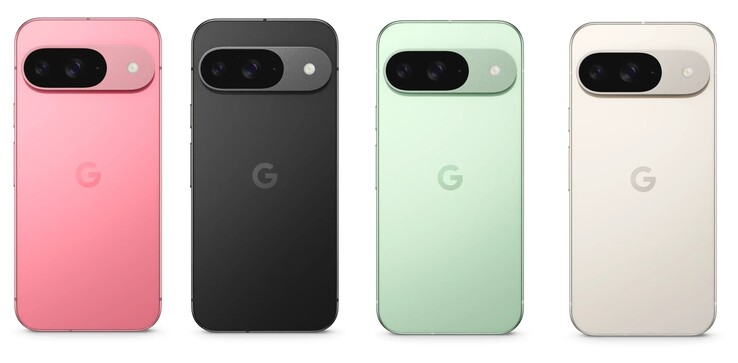
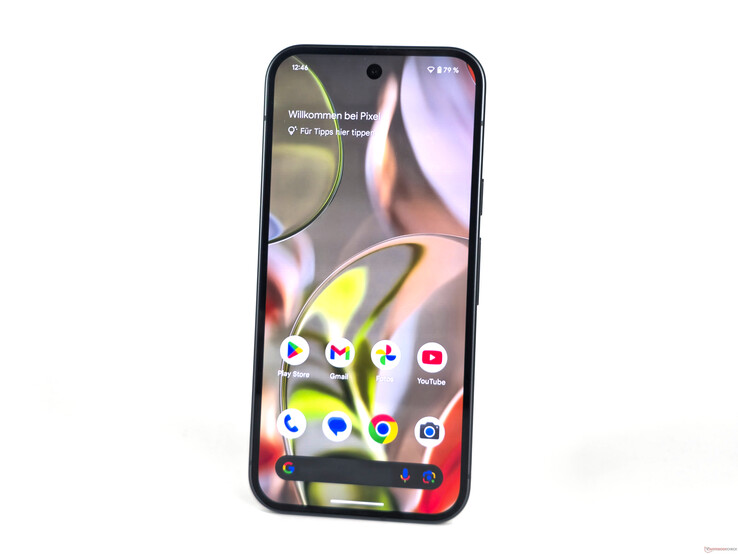





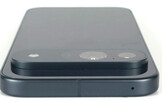

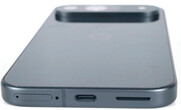

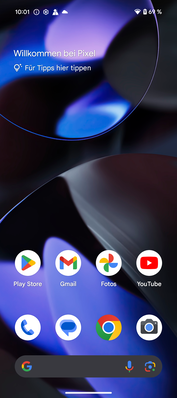
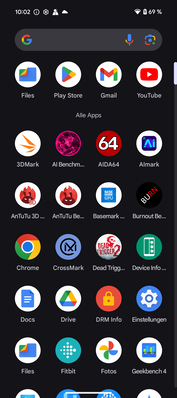
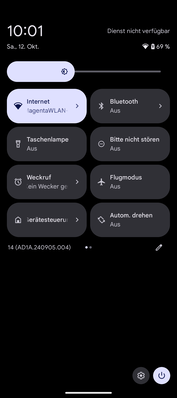
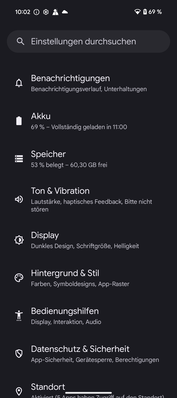
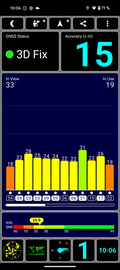
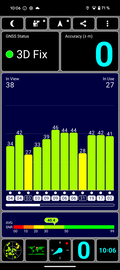

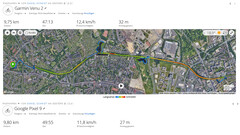

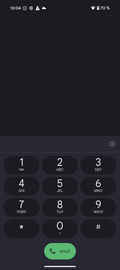
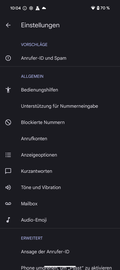







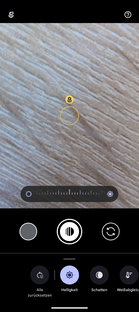
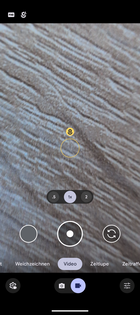
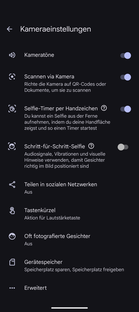
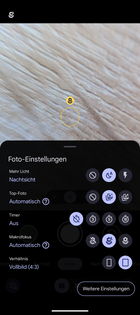



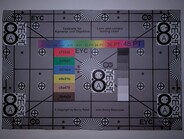

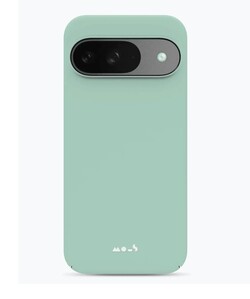
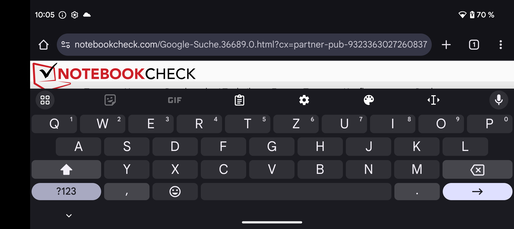











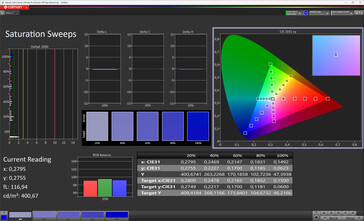
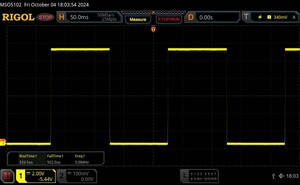
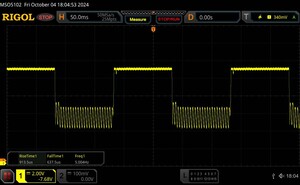
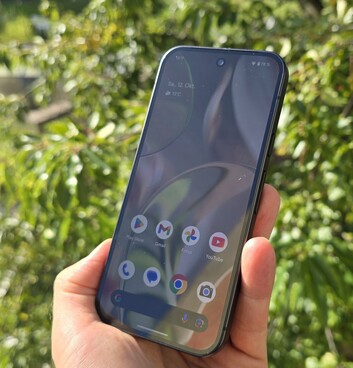
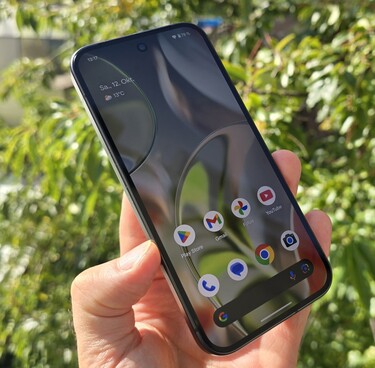




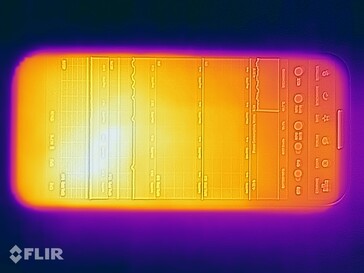
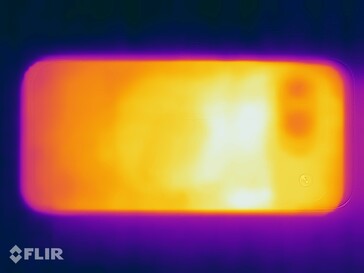
 Total Sustainability Score:
Total Sustainability Score: 

